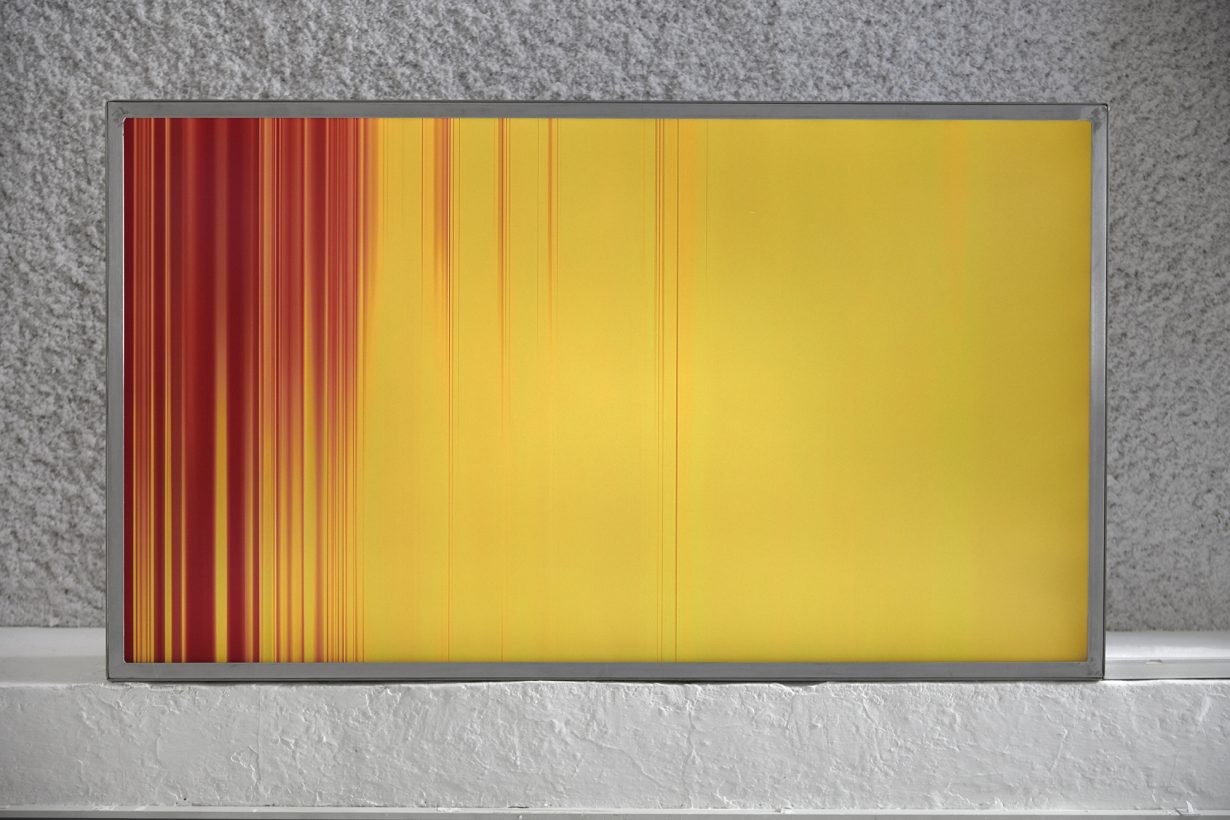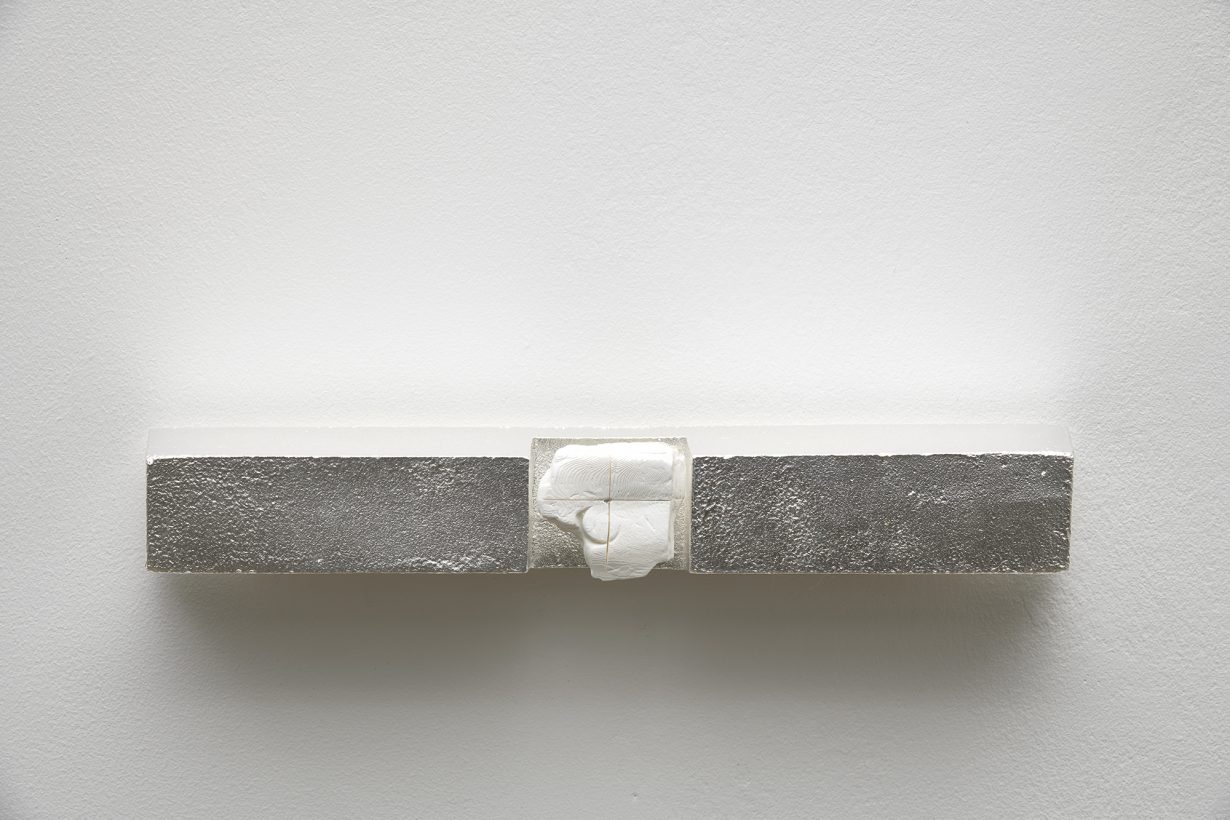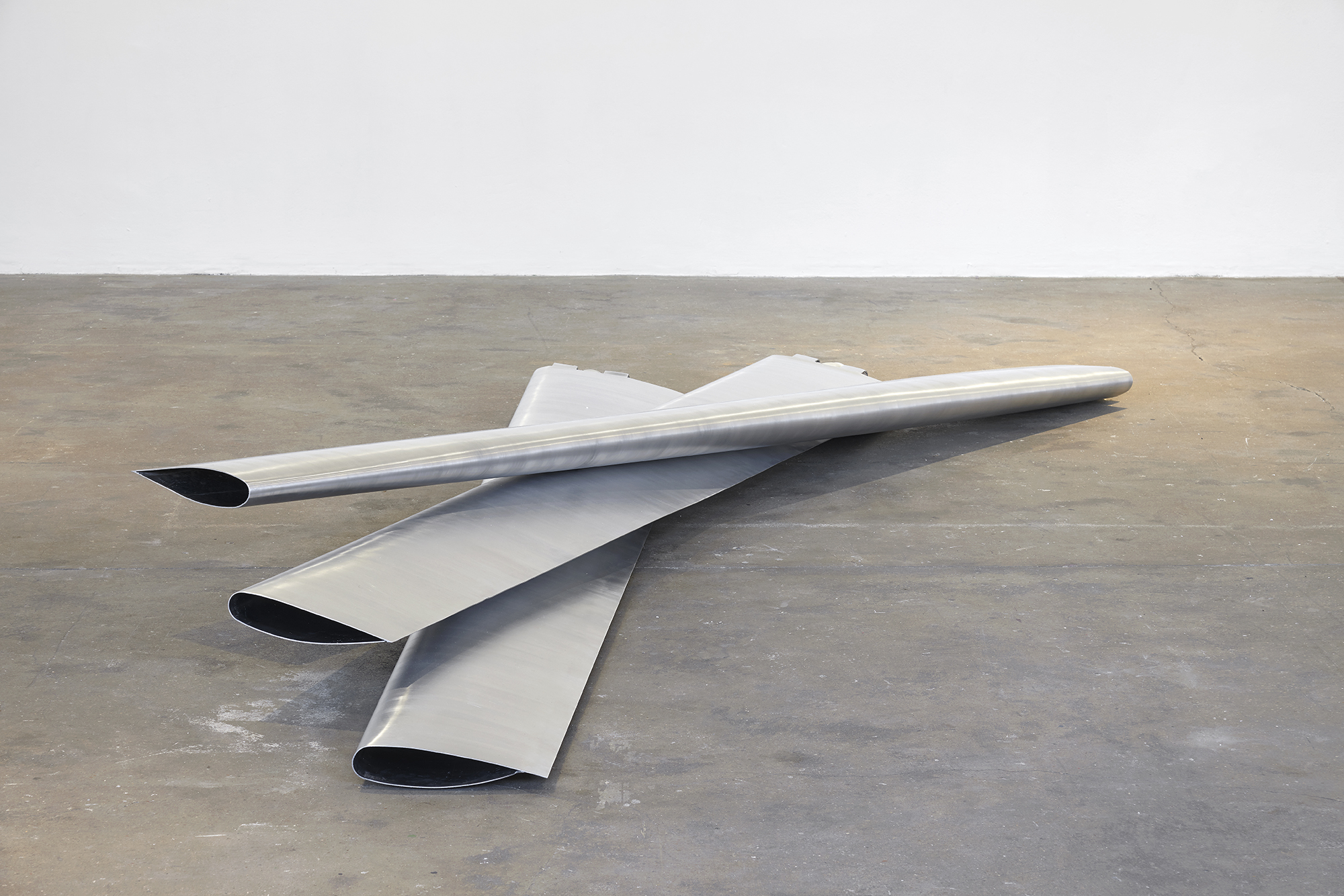The artist’s sphere music at Chisenhale Gallery argues for a more spectral understanding of our existence. What are we actually listening for?
According to the composer Pauline Oliveros’s concept of ‘deep listening’, if I listen closely enough, and reformulate how I perceive sound and the various pressures and spatial displacements that produce it, I’ll be able to hear spectral and temporal expanses beyond my prior comprehension. As if the world’s secrets are all just out there and accessing them is merely a matter of practice and will. New York artist Grant Mooney’s exhibition sphere music puts that to the test.
Three sets of metal turbine blades, each three metres long, have been placed in groups across the gallery floor (Stalls (τ.), all works 2025). The notes tell us these are well used and weary, but they have been cleaned to perfection. The arms are stacked delicately in threes, fanned out like playing cards, each cumbersome piece of folded-over aluminium steel polished within an inch of its life. While their surfaces are spotless, small mucky flecks remain on the hollow inside. What might be the drive motors, whose axles have sockets to accept the blades, are similarly polished to near-perfection and laid on the floor, pointing away from the newly removed gallery window panes. The inblowing wind imitates the turbines’ action, relieving them of their day job. Trees across the canal outside rustle in the breeze, but all is otherwise quiet. Above, a digital screen affixed parallel to the ceiling shows frequency lines. Coloured in reds and yellows like thermal images, they dance around to the live vibrations of a harp stationed (in collaboration with the artist Winona Sloane Odette) atop the gallery roof, playing off the air. We’re told this in the notes, too, because we can’t hear it.

That’s because absence – or more specifically, displacement – is this show’s dominant register. We’re taking in Mooney’s objects while their charge is happening elsewhere, somewhere hard to reach. Mooney has previously traded in delicate, smallscale metalworks – like in his Cation series (2024), pieces of electroplated steel, pinched in the centre like a tissue; or Partials (2021), fragmented mouthpieces of brass instruments, nailed to gallery walls like coat hangers. He picks up here with Ƒe.(i), the exhibition’s most diminutive (and beautiful) work. Mooney has pinned a piece of cuttlebone, no larger than a Post-it note, through its centre into the cleft of a cast-iron block electroplated with silver. The shell’s brittle surface flickers under the gallery lights as you move in to inspect it on the wall; curved lines on the surface seem to be modulated like cartographic gradients. The Oliveros concept kicks in: ocean waves brushing across the calcic side; the hydrostatic pressure beating down on the straining seabed; the gallery silent.

In fact, Ƒe.(i) captures Mooney’s work at its best – the material juxtapositions and affinities of cast iron and fishbone; how the spaces between each seem to trace their opposing forces on each other, as if we could see relational gravity in X-ray. It compresses the ideas muddled and floating around the rest of this nearly-bare space – that we might channel and make sense of a certain universal synaesthesia. Mooney cites as an influence what the historian and theorist Douglas Kahn calls ‘panaurality’, the idea that planetary rotation could in theory produce a kind of resonance so pervasive that it might, on some ultrasubliminal level, always be audible (call that ultra-deep listening). Which, in turn, points to a more human conflict at the centre of sphere music: the inference of a greater, holistic, even spectral planetary existence, and the bathos of our material, earthly, blunt-tool lives. Entire universes coming in on the breeze; spare rotary shafts, twanging strings. Mooney’s works invite us to just listen, when maybe there’s not much to see, much less to hear.
sphere music at Chisenhale Gallery, London, through 7 December
From the November 2025 issue of ArtReview – get your copy.
Read next: Sight, sound and silence combine in Raven Chacon’s inducements to revolutionary acts of listening
